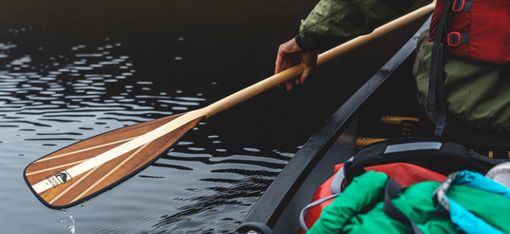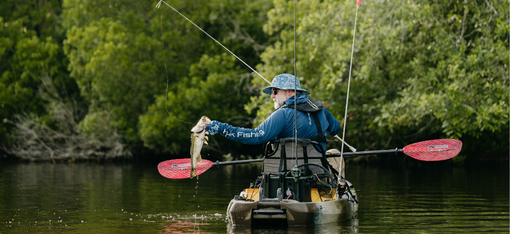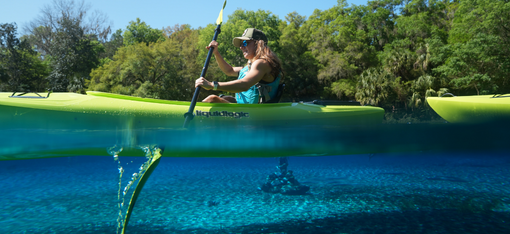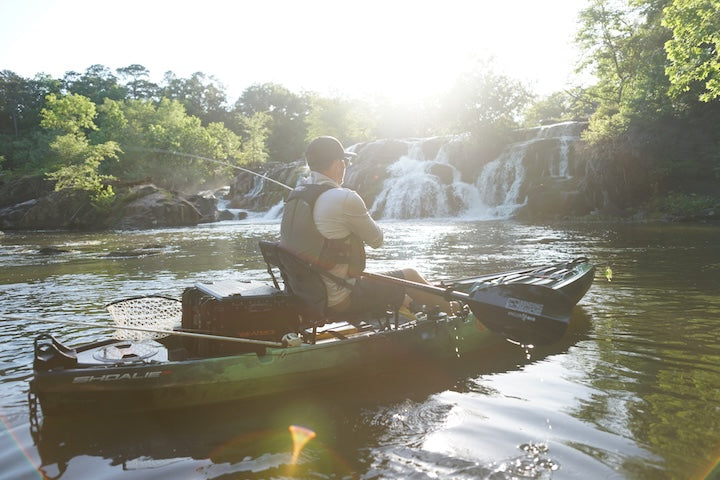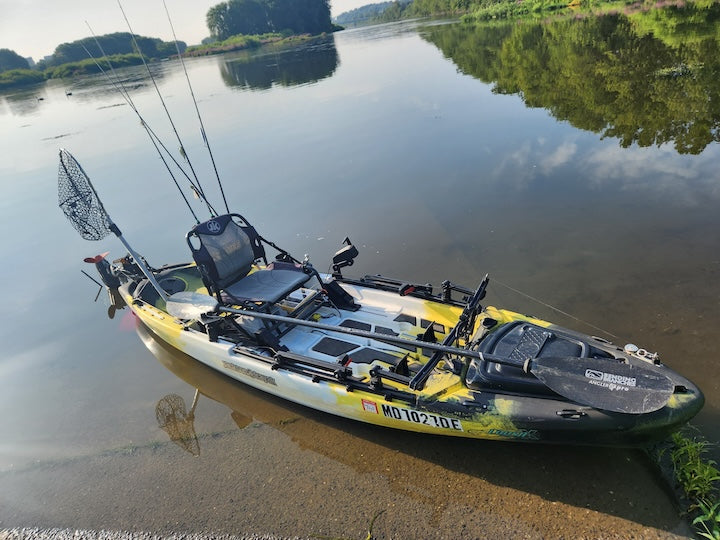Kayak Fishing: How to Find Bass Fast
3-minute read + 14-minute video
Bending Branches ProStaffer Gene Jensen (aka Flukemaster) shares his best tips with us for catching largemouth bass, especially in the spring.
Are you a beginning kayak angler? These tips are for you. Are you an experienced bass angler? You may very well learn something, too! Gene has been around the pond a few times.
Watch Gene’s full video below or keep reading to learn how to find bass fast, no matter what lake you’re fishing:
Become Obsessed with the Weather
In the spring, knowing the water temperature will be one of the big keys to knowing where to look for fish. Before he fishes a body of water, Gene is fanatical about keeping track of the weather in that area for days ahead of time.
Has there been wind? What has the wind direction been? Depending on wind speed and direction, you’ll want to look for the most protected spots on the lake. That’s where the water temperature will be the warmest in early spring. After a winter of cold, the fish like to get into those new warmer temps.
What have the nighttime temperatures been in the past several days? If they’ve been colder, the water will be colder. If they’ve warmed up, the water will be warmer, too.
Know Seasonal Patterns
Every region has seasonal patterns. Spawning season starts in the south and makes its way north as the season progresses. The more you know about the seasonal patterns in your area, the better. Learn when the fish are likely to spawn in your area—spawning brings them into the shallows.
Gene likes to take the water temperature throughout the lake (starting with the launch) so he can target the warmest water on those early spring fishing days. It’s easy to keep notes on your phone rather than having to remember the temp readings.
Learn How to Read a Fishing [Topographical] Map
Fishing maps are readily available, both print and digital. A simple online search should lead you to good sources for your area. Use them! Learn how to understand the contours of the lake bottom and the shoreline. Learn how various fish species relate to those contours, even throughout the season.
Topography affects water temperatures, too, so understanding fishing maps (along with recent weather patterns) will help you locate the warmest water quickly.

(photo courtesy of Drew Gregory Fishing)
Don’t Stay Where Fish Aren’t
Before he even casts, Gene moves around the lake looking for signs of life—splashes in the water, food fish swimming in an area, likely spawning beds, plenty of vegetation and insects that are a food supply.
Once you see those signs of life, start casting. Try different baits for different areas and don’t hesitate to cover a lot of water quickly. Once they stop biting or if you have no success in that area, keep moving. Don’t stick around where no fish are biting.
Fish the Points
Points can be actual land points that jut into the lake or points made of patches of grass and other vegetation. These indicate contours in the lake’s bottom structure and offer shelter for fish.
Again, this is key in early spring because you’re likely to find shallow, protected waters on one side or the other of a point, which could indicate warmer temperatures. Bass like to spawn in shallow flats, so they’re drawn to those areas during pre-spawn and spawning seasons. Work the edges of these points, trying different baits until you find one that works for you.
Gene suggests quieting your boat down as much as you can when you fish the shallows, especially if you’re on a “high-pressure” lake (one that’s actively fished). A quiet boat—your transducer off, no paddle drip, etc.—is less likely to spook the fish you aim to catch.
Time on the water is, of course, invaluable. Consider these tips, do your homework and get out there and fish!
See more great kayak fishing content on Gene's YouTube page, Flukemaster.
Do you have paddle questions our friendly Customer Service Team can help you with today? Contact us: 715-755-3405 • [email protected]
More for you...




